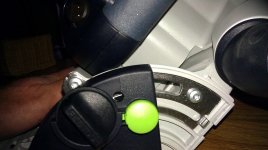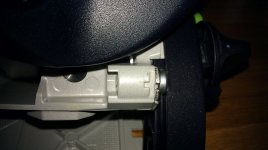mprzybylski said:
Please do let me know how your saw comes back. I'd be interested to see if they fixed the problem as I've read some threads where someone sent it back twice and it didn't get fixed :/
I got the saw back. At first I thought I still had the same problem. After talking to Service for direction on adjusting the stop and starting to adjust it myself, I found that the stop was as close as it could get to 90 degrees. For me, the problem resulted from securing the front bevel lock knob first rather than the rear lock knob. When I secured the rear knob first I didn't have angle or 90 degree cut problems. The stop was dead-on no matter what method I used to determine if it was a square cut.
When I secured the front bevel lock knob first, I tended to put some stress on the saw via the handle, thus slightly deforming the base of the saw. This slight pressure and bending of the base (or possibly the "sub-base") resulted in securing the saw slightly off of the intended position or, in the case of the default stop, off of 90 degrees enough to make a noticeable difference. Since the bevel stop and mechanism is essentially in the rear, securing the rear knob first eliminated the possibility I would put any stress on the saw itself while locking it down in position with the knobs. Then, just securing the front knob last without touching the saw kept it in position.
This seems to have eliminated my problem. Hope it eliminates yours. If not, I feel sending it back to Service to permit them to reset the default stop was not a bad thing since it gave me peace of mind at this point. I will leave it to Service to provide direction on the steps to set the stop, but it isn't hard. It invokes loosening the stop plate in the rear (two screws) and slightly moving it to fix the problem if it really exists). One thing you will need is a torx head driver (T25 I think) long enough to reach a recessed screw securing the stop plate.
I will keep watch on my cuts for awhile to be sure things don't change but, for now, I'm satisfied.
Oh, by the way, Shane and Service were very patient with me and provided what I needed.



